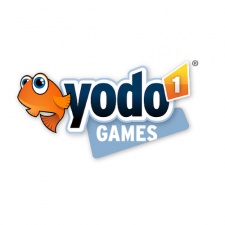Have you ever wondered how your studio can use artificial intelligence to improve the playability and profitability of your mobile games?
We’ll be discussing various ways to monetize a game in future articles, but today’s focus is on how developers can enhance existing game monetization systems with IAP (in-app purchases) and give players a better experience with recommendation systems.
What are recommendation systems?
Recommendation systems use machine learning algorithms to predict whether users will like certain items. Unless you’ve been living in the stone age, you’re sure to have used them yourself.
Turning to the mobile gaming industry, recommendation systems come in handy when players want to, for example, buy new equipment but don’t know exactly what they need yet.
How do recommendation systems make mobile games better?
By giving new players suggestions on where to start and saving established players time by putting the items they’re interested in at their fingertips, recommendation systems make the gaming experience easier to enjoy. Not to mention that they’ll save you time while optimizing your mobile game monetization model.
According to our data, recommendations have a definite impact on in-app purchases and mobile game revenue.
How AI Helped Our Game Sell More Bundles
At Yodo1, our goal is to design recommendation systems so that as many players as possible can benefit from it and thereby enjoy an enhanced gaming experience.
For example, we can look at a mobile game we’ve been working on recently. We’ll refer to it here as “Robot World”.
Let’s say that, in Robot World, players have to build a team of robots and equip them with tools and special skills to attack other players’ headquarters. To build a unified team, they need to know the robots and the items available to them pretty well.
To guide our players in their decision making, then, we needed to understand and quantify the delicate relationships between different characters’ skills and tools very well ourselves. This is where our AI team comes in, using a deep-learning technology called self-attention to build our recommendation system.
Before the recommendation system, players were buying bundled items of their own initiative and according to their knowledge of and experience in the game. However, when they weren’t sure what to get, many players simply abandoned the idea of making a purchase.
With the recommendation system, we use AI to decide which item bundles to promote based on what will be most beneficial to each individual—helping convince them of the right purchase and successfully turning even non-paying players into payers.
Here’s how we did it:
First, we used AI to gather data on bundles purchased by players in the past. Then the system could make the same recommendations to players in the present with similar teams and characteristics. Since we used data from experienced players, we were confident that many others in similar situations could benefit from their carefully made choices.
Second, we used the AI-powered recommendation system to better position bundles in the “Robot World” game store, making the user more willing to pay for the right item and improving our mobile game monetization.
Since the space to showcase bundles is limited—and the game has more than a thousand bundles—it was quite a task to have our operating team study the game and manually choose which ones to feature in the store. The AI system, on the other hand, can determine what to display for every individual player—leaving a lot less room for doubt than with the previous system.
The results
With a few rounds of A/B testing, we contrasted our recommendation system based on human suggestions with our new AI-powered one. After 14 days of testing, the AI-driven system’s impression per purchase rate was 47% higher than the human system, driving a sales increase of almost 20%.
Looking forward, our objective is to create dynamic bundles tailored to every single user and their team’s characteristics—abandoning the fixed-bundle model that might contain sub-optimal items for certain players.
Overall, implementing AI in this mobile game elevated our monetization strategy and lowered the amount of human effort needed—effectively optimizing IAP monetization and increasing revenue without major human resource costs.
At Yodo1, we have built an AI-powered product suite of services to help make games around the world more playable and more profitable. Our monetization, marketing, and publishing teams are ready: simply contact us at info@yodo1.com to bring your game to the next level.
Subscribe to our newsletter and follow us on LinkedIn to learn more about monetization strategies, cutting edge ad design with banner ads, video ads, and rewarded video—plus advice on the best ad networks to help you make more money with your games.

















